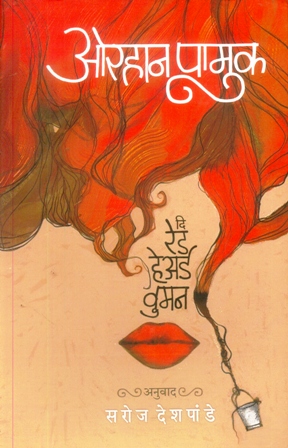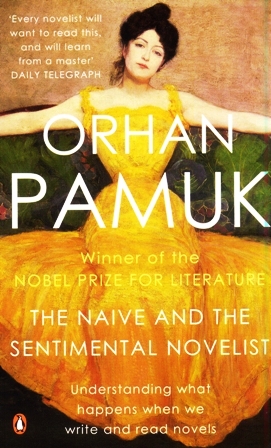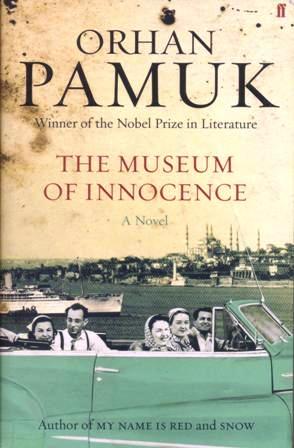-
The Red Haired Woman (दि रेड हेअर्ड वुमन)
पौंगडावस्थेत असताना लाल केसांची एक आकर्षक बाई सेमचं लक्ष वेधून घेते. आणि मग तो तिच्या विचाराने पुरता झपाटला जातो…. मनातल्या विचारचक्रात तीच आणि तीच! सेमचे वडील तत्पूर्वी गुढरित्या परागंदा झालेले असतात. शिक्षणासाठी पैशांची जमवाजमव करण्यासाठी सेम इस्तंबूलजवळ विहीर खणणाऱ्या मास्टर महमूत यांच्या हाताखाली काम करत असतो. सेमच्याच एका चुकीमुळे झालेल्या अपघातात महमूत दगावतो का…? आता कथानक वेगळंच वळण घेतं…. कादंबरीचं कथानक जसजसं पुढे सरकतं, तसतसे नात्यातले गुंते गहन होत जातात. राजा इडिपसची ग्रीक पुराणकथा आणि रुस्तम व सोहराबर पर्शियन पुराणकथा यांची समांतर पातळीवर या गुंत्याशी लेखक सांगड घालत राहतो. त्यामुळे या कादंबरीला वेगळे आयाम प्राप्त होतात….. वाचकांची उत्कंठा पानागणिक वाढत जाते. पुराणकथांची सांगड घालण्याचं प्रयोजन त्यांचं कुतूहल वाढवत जातं….. कोण होती ती लाल केसांची बाई? महमूतविषयीचं वास्तव काय होतं ? ग्रीक पुराणकथा पेरण्याचं प्रयोजन कोणतं? नोबल राजकारणविजेते लेखक ओरहान पामुक यांची बेस्टसेलर कादंबरी…
-
The Naive and the Sentimental Novelist
What happens within us when we read a novel? And how does a novel create its unique effects, so distinct from those of a painting, a film, or a poem? In this fascinating set of essays, based on the talks he delivered at Harvard University as part of the distinguished Norton Lecture series, Pamuk presents a masterful theory of the novel. Drawing on Friedrich Schillers famous distinction between nave writers those who write spontaneously and sentimental writers those who are reflective and aware Pamuk reveals two unique ways of processing and composing the written word. He takes us through his own literary journey and looks at the works of writers such as Tolstoy, Dostoevsky, Stendhal, Flaubert, Proust, Mann, and Naipaul to describe the singular experience of reading. Unique, nuanced, and passionate, this book will be beloved by readers and writers alike.
-
The Museum Of Innocence
It was the happiest moment of my life, though I didn’t know it.’ And so begins the new novel from the universally acclaimed author of Snow and My Name is Red, his first since winning the Nobel Prize. It is a perfect Spring in 1975, Istanbul. Kemal, heir to one of the town’s wealthiest families, is about to become engaged to Sibel, from another aristocratic family, when he encounters Füsun, a beautiful shopgirl, and a distant relation. As they break the taboo of virginity, a rift opens between Kemal and his lovingly described world of the westernized families of Istanbul with their opulent parties and clubs, society gossip, dining-room rituals, picnics, their mansions on the Bosphorus infused with the melancholy of decay. For nine years Kemal will find excuses to visit the other Istanbul, a house in the impoverished backstreets that Füsun shares with her parents, enjoying the consolations of middle-class life at a dinner table in front of the television. His love for his distant relative will take him to the seedy film circles of Istanbul, cheap bars, sad hotels, a society of small men with big dreams and bitter failures. It will make Kemal a compulsive collector of objects that chronicle his love story and his obsessive heart’s reactions: his anger and impatience, his remorse and humiliation, his miscalculated hopes of recovery, and his daydreams that transform his Istanbul into a city of signs and spectres of his beloved with whom he can only exchange meaning-laden glances, stolen kisses in cars, movie houses and park shadows. All that will remain to him, certainly and eternally, is the museum he creates, a map of a society’s rituals and mores, and of one man’s broken heart. A stirring exploration of the nature of romantic attachment, and of the mysterious allure of collecting, The Museum of Innocence plumbs the depths of an Istanbul half western and half traditional - its rituals, its morality, its vast cultural history. This is Orhan Pamuk’s greatest achievement.



